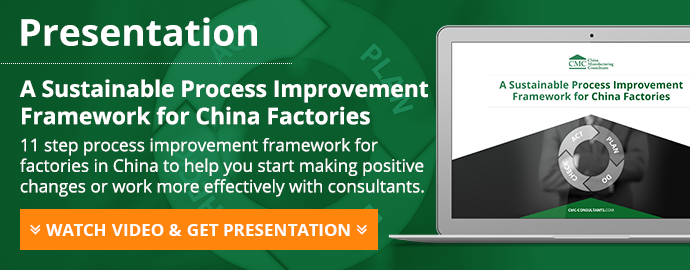After working closely with a number of organizations, it has become obvious that poor problem-solving abilities are a root cause of poor performance. No wonder GE made Six Sigma (and the DMAIC framework) a company wide initiative in the 1990s...
And it's easy to understand why Toyota gives 2 weeks of training to each employee in their plants, every single year. Developing good problem solvers at every level of the organization is priceless. It means problems are surfaced and addressed. It means their root cause(s) are understood. And it means they are less likely to come back. So the selection of the right lean problem solving tools is very important.
Now, the question is, what problem solving framework to use?
- Toyota’s practical-problem solving?
- Six Sigma’s DMAIC?
- Ford’s 8D?
- A simple PDCA/PDSA?
None of them!
Don’t make it a religion. It depends on the needs and the context.
Katie Anderson offers us 3 good context-dependent options in 'When to “A3”? – 3 problem-solving tools to match the complexity of your problem'. Let’s go through each of these lean tools and techniques here in more detail:
1. Daily improvement ideas

You don’t want to punish anybody with lots of paperwork if they propose an idea.
The author mentions an example from a hospital, where the staff could fill out an A4 page called “situation, target, proposal.” It is quite straightforward.
On the back of the form, the area manager can transform this into a to-do list if approved. It is used for following up on the proposal.
Who said lean problem solving tools had to be complicated?
In other instances, collecting a list of problems from shop floor operators and technicians has been quite helpful too. A good engineer can usually come up with solutions. BUT he usually does this without involving the operators and local leaders, especially in China. An opportunity to develop people has been lost.
2. Problems limited to one area of the business
The author shows an example of an A4-size form with 4 boxes. Here is the flow:
- Identifying a measurable gap in performance
- Root cause analysis
- Ranking of the root causes in order of significance
- Putting a plan in place to address root causes, test, and learn
This is useful for engaging the employees to dig down to root causes. The manager can ask questions and guide the employees in the right direction.
It naturally avoids most of the common mistakes made during process improvements. I like it.
Yet it appropriates only if the problem is under the control of one area/functions of the business. Which leads us to our third option…
"Are you interested in making sustainable improvements in your, or a supplier's factory?
Download our 11 step process improvement framework, developed by our factory management consultants following tried-and-tested methodology."
3. Complex problems that span multiple functions/areas

This calls for the “A3” approach, also called “Toyota’s practical problem solving” approach. The main difference is spending more time before identifying root causes (background, current condition, target).
That makes sense for at least two reasons.
- The leader of this exercise needs to talk with people outside his/her area, get information, and involve them in the analysis step by step. If you don’t have their buy-in by the time you point to root causes, they won’t commit to implementing the countermeasures!
- A big ugly problem is usually made up of several sub-problems. Break it down and tackle them one at a time!
The Lean Enterprise Institute has published a book that teaches how to use this approach.
Great book. However, its main focus is on the A3 as a business process, not just as a problem-solving tool. The author does not indicate that it is reserved for complex problems. However, it is clear that each A3 takes serious time. It is not for every little issue.
Have your say on picking the right lean tools and techniques...
Does that make sense to you? Pick the right framework for each situation. Top managers tend to focus on the largest problems, but it is also essential to address the smaller issues that pop up everywhere in the organization. How have your experiences been with choosing and implementing lean problem solving tools and techniques?
Please leave a comment or question below, and we’ll make sure to respond!




